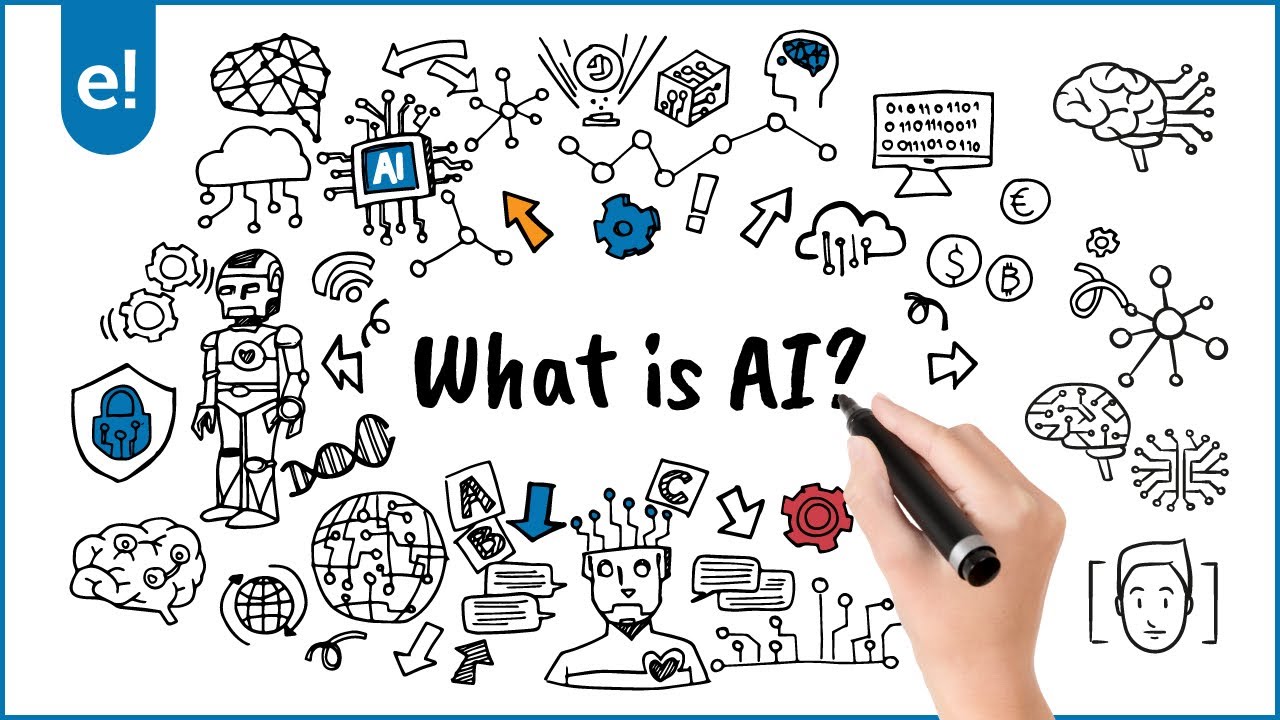Understand AI in less than 5 minutes
Summary
TLDRIn this video, Chris Avrilla discusses the evolving role of AI in human resources, emphasizing that while AI is often marketed as a miracle solution, its true potential lies in its ability to automate processes and assist in decision-making with human supervision. He explains the difference between true AI and current machine learning, which relies heavily on human feedback to improve its accuracy. While AI can streamline tasks like resume matching, it still requires ongoing human collaboration and careful management to avoid ethical issues and biases. Overall, AI should be viewed as a tool to enhance human capabilities, not replace them.
Takeaways
- 😀 AI is a broad set of technologies that can automate processes, find patterns in data, and help interact with humans through natural language.
- 😀 True artificial intelligence, which involves reasoning and explaining outputs, is still far from realization and is not yet available in the market.
- 😀 Most AI systems today use statistical methods rather than true intelligence, often relying on supervised learning.
- 😀 AI can learn from human feedback and improve over time, as seen in early programs like the animal guessing game.
- 😀 Machine learning, a modern evolution of AI, still requires human-guided input to function effectively, especially for tasks like image recognition or resume matching.
- 😀 In HR, AI systems can be used for tasks like resume matching by analyzing resumes and job descriptions with natural language processing, but they require human confirmation for accuracy.
- 😀 For AI systems to improve, they need clean, useful data and smart feedback from humans to avoid errors and bias.
- 😀 AI is often used for automating repetitive tasks but brings potential risks such as bias, ethical concerns, and false negatives.
- 😀 AI is best viewed as a tool for human collaboration rather than a replacement for human workers, creating opportunities for efficiency and new roles.
- 😀 Working with AI requires new skills, mindsets, and strategies, including feedback, auditing, and data management to ensure proper functioning and ethical considerations.
Q & A
What is the primary focus of Chris Avrilla's presentation?
-Chris Avrilla's presentation focuses on explaining artificial intelligence (AI) in the context of HR technology, emphasizing the current capabilities of AI and the importance of human involvement in its development and supervision.
What does AI today mainly involve according to the speaker?
-AI today involves technologies that allow computers to find patterns in data, automate decision-making processes, learn from feedback, understand natural language, and interact with humans to provide or capture information.
What distinction does Chris Avrilla make between AI and true artificial intelligence?
-Chris Avrilla differentiates between AI, which is largely statistical and based on data-driven algorithms, and true artificial intelligence, which is capable of reasoning on input and explaining its outputs—this level of intelligence is still far from being realized.
How does the speaker explain the concept of supervised learning in AI?
-Supervised learning in AI involves feeding machines labeled data (e.g., pictures of dogs with labels) to help them learn patterns and improve predictions. The learning process is guided by humans who provide feedback to refine the system's understanding.
What is the key takeaway about AI's current capabilities?
-AI today is not truly intelligent; it operates more like an advanced tool that follows predefined rules and algorithms. The key to its effectiveness is human supervision and feedback, which help refine its performance over time.
Can AI fully replace human workers in HR tasks, according to the script?
-No, AI cannot fully replace humans in HR tasks. It is designed to assist with repetitive tasks and improve efficiency, but human oversight is still required to ensure accuracy, address ethical concerns, and refine the system through feedback.
What example does the speaker use to illustrate how AI learns?
-The speaker uses an example of an old program that would guess the animal the user was thinking of. The program learned by asking the user for defining characteristics, building a database of animals and their traits based on human feedback.
How does AI benefit HR, according to the presentation?
-AI can help HR by automating tasks such as resume matching, saving time, and improving efficiency. It uses natural language processing to analyze resumes and job descriptions, making the hiring process faster and potentially more accurate.
What potential risks are associated with AI in HR?
-AI in HR can carry risks such as ethical issues, rule bias, or false negatives. It's important to ensure that AI systems are regularly supervised and audited to avoid unintended consequences.
What mindset and skills are required to work effectively with AI in organizations?
-To work effectively with AI, organizations need to adopt new skills and mindsets that include understanding how to supervise AI, provide feedback, and manage data and rules to continuously improve AI systems and ensure their proper function.
Outlines

This section is available to paid users only. Please upgrade to access this part.
Upgrade NowMindmap

This section is available to paid users only. Please upgrade to access this part.
Upgrade NowKeywords

This section is available to paid users only. Please upgrade to access this part.
Upgrade NowHighlights

This section is available to paid users only. Please upgrade to access this part.
Upgrade NowTranscripts

This section is available to paid users only. Please upgrade to access this part.
Upgrade NowBrowse More Related Video

Season 3 Episode 1: Cyber (in) Sanity- Demystify Ai Podcast

Algor-Ethics: Developing a Language for a Human-Centered AI | Padre Benanti | TEDxRoma

Is an AI really the top hacker in the US right now?

Artificial Intelligence in 2 Minutes | What is Artificial Intelligence? | Edureka

Código Fuente #26 Mariano González - CISO & Beatriz Martínez– Zurich Seguros

Will AI adoption in ERP be a positive or negative, overall?
5.0 / 5 (0 votes)